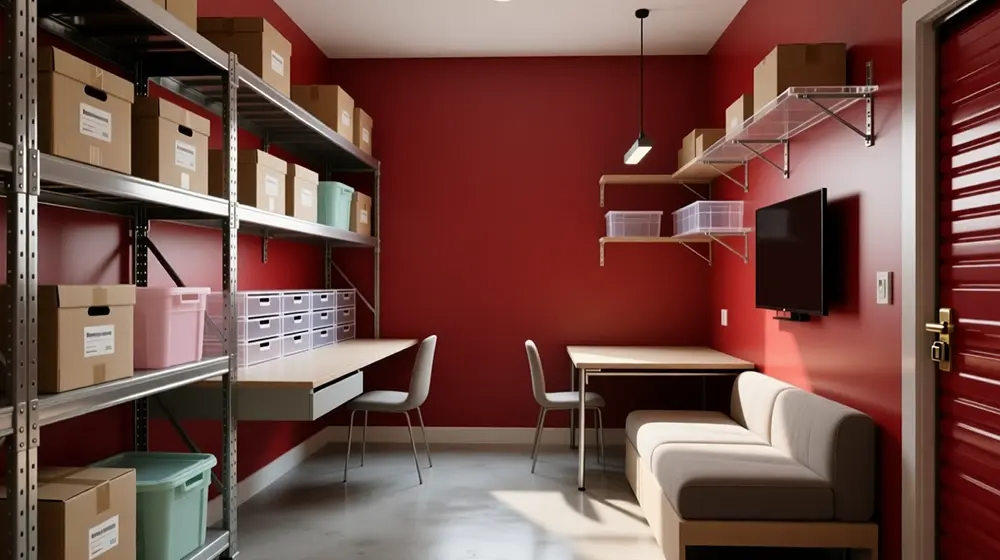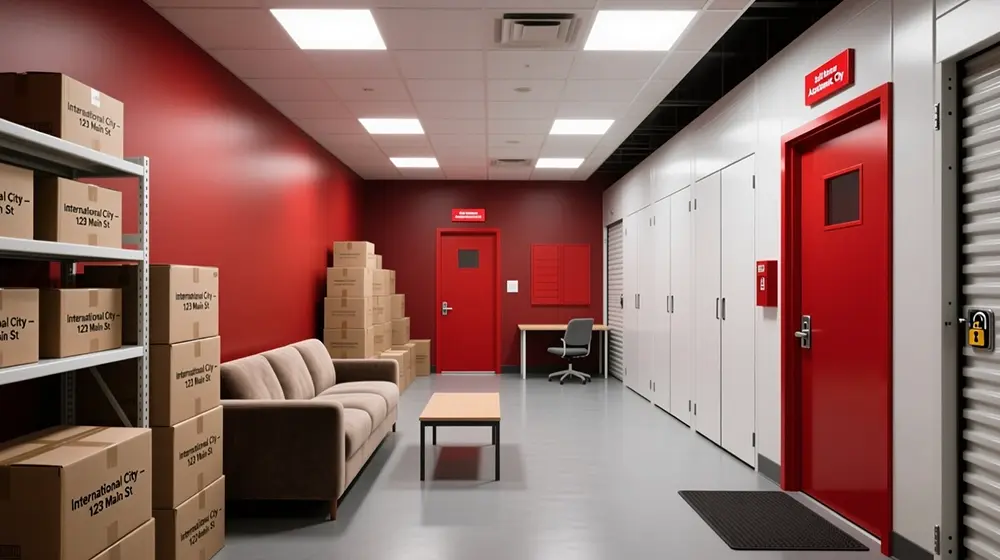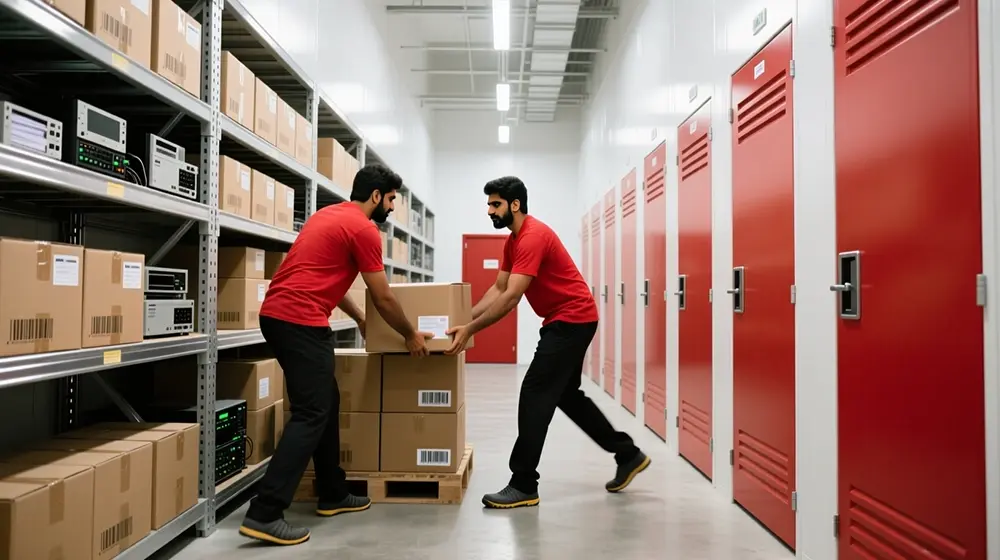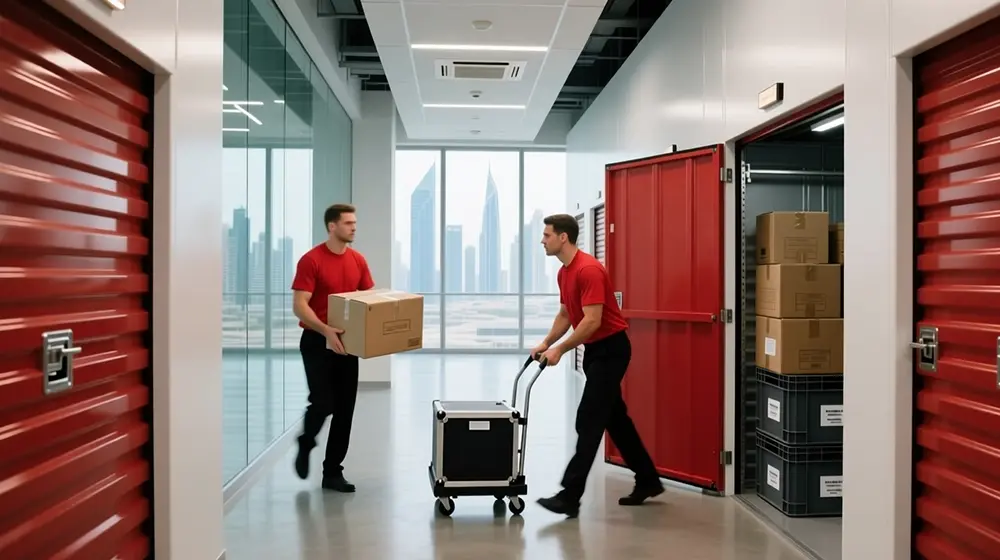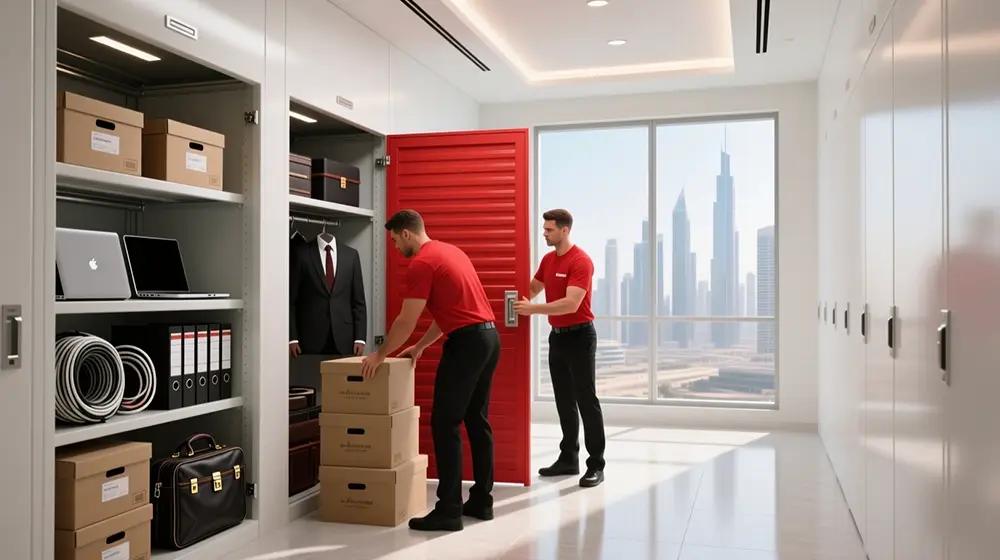The contemporary lifestyle in Dubai implies the combination of luxury life with frequent movement, redesigning interiors, and low apartment area. Consequently, the residents tend to keep valuable furniture both in the short and long-term. Nevertheless, the extreme weather conditions of the city create special hazards to furniture.
UAE weather sources record that daytime temperatures in Dubai go often in the low to mid-40s degC range and become humid during the summer. Heat and moisture harm wooden structures: research indicates that mechanical wood properties are affected in a negative way during prolonged cyclic moisture. Therefore, these risks are reduced with the help of climate-controlled storage.
There is evidence that repeated cycling of moisture and heat on wood causes measurable loss of mechanical strength, warping, and cracking. As an illustration, wood species that are prone to moisture absorption exhibit diminished stiffness and augmented under-loading deflection. Therefore, hot humid climates such as those in Dubai can be greatly slowed down in terms of this degradation by maintaining climate-controlled storage.
Also Read : Is Self Storage in Dubai Sustainable? Exploring the Environmental and Economic Benefits
What Is Climate-Controlled Furniture Storage?
In preservation literature and museum practice, safe storage environments often maintain temperatures in the 15–25 °C range and relative humidity between 45 % and 55 % to protect organic materials like wood and leather. Commercial climate-controlled storage facilities commonly aim for 13–27 °C and humidity under 50 % RH, using HVAC, dehumidifiers, and insulated walls.
Core Features of Climate-Controlled Units:
- Temperature Stability: Continuous airflow and refrigeration cycles maintain stable heat levels.
- Humidity Regulation: Dehumidifiers keep relative humidity within a safe range for organic materials.
- Air Filtration: HEPA filters capture 99.97% of dust particles as small as 0.3 microns.
- Pest Resistance: Airtight sealing prevents insect or rodent entry.
- Security Control: Biometric access, CCTV, and fire safety compliance ensure asset safety.
Research published by the Canadian Conservation Institute (CCI, 2023) shows that repeated humidity fluctuations cause micro-cracking and delamination in wood and leather finishes, while stability within the mid-range (≈ 50 % RH) minimizes structural stress and fungal growth.
How Climate-Controlled Storage Works
Climate-controlled furniture storage in Dubai uses environmental engineering systems to balance airflow, temperature, and humidity. These systems operate continuously to maintain equilibrium between internal and external environments.
The Process Explained:
- Air Conditioning (HVAC Systems):
Industrial HVAC systems regulate air temperature within ±1°C. They circulate filtered air through ceiling and floor ducts to maintain uniform cooling. - Dehumidifiers and Moisture Sensors:
Digital hygrometers detect moisture levels every 60 minutes. If humidity exceeds 55%, automated dehumidifiers activate. - Insulated Infrastructure:
Storage rooms use R-25 thermal-grade insulation panels, minimizing heat transfer by 95%. - Air Purification and Dust Control:
HEPA filters remove dust and microbial particles. According to Dubai Municipality’s Indoor Air Quality Regulation (2024), clean storage air prevents surface oxidation and biofilm formation. - Security and Safety Systems:
Fire alarms, smoke detectors, and temperature sensors connect to central monitoring systems approved by the Dubai Civil Defence Department (2024).

Why Dubai’s Climate Demands Controlled Furniture Storage
Dubai’s desert climate includes both heat and humidity, a combination that is particularly destructive to furniture materials.
Key Environmental Threats:
- Heat Expansion:
Wood expands by 0.25% per 10°C temperature increase, causing surface cracks and joint loosening. - Humidity Swelling:
Leather absorbs atmospheric moisture, leading to mold and texture loss. - Dust Abrasion:
Sandstorms cause abrasive wear on coatings, especially during May–August. - Pest Attraction:
Humidity and organic materials (cotton, leather, jute) attract termites and silverfish. - Oxidation:
Metal frames and fittings oxidize when exposed to 60%+ humidity levels for more than 10 days.
In the Statistical Analysis of Dust Storms in the UAE, it is noted that the number of sandstorm days with visibility less than 1000 m varied across years (some years had 3, some had 1), according to NCM data.
Table 1: Components of a Climate-Controlled Storage Facility (Updated & Verified)
| Component | Primary Function | Applicable Standard / Authority |
| HVAC System | Regulates temperature and humidity to maintain stable microclimates for stored furniture. | ASHRAE Standard 90.1 (Energy Efficiency) + ASHRAE Handbook – HVAC Applications (2023) |
| Thermal Insulation | Reduces heat transfer and maintains interior stability against Dubai’s external temperatures. | Dubai Green Building Regulations & Specifications (2016) |
| Air Filtration (HEPA / ULPA) | Removes fine dust particles and airborne pollutants common in desert environments. | ISO 29463 / EN 1822 |
| Fire Detection & Suppression | Provides early warning and automatic extinguishing to prevent property damage. | UAE Fire & Life Safety Code of Practice (2018) |
| Smart Access Control | Biometric / RFID entry for restricted facility access and audit logging. | Dubai DED Security & Data Protection Guidelines (Smart Dubai 2023) |
| 24/7 Surveillance & Alarms | Ensures asset protection through CCTV, intrusion detection, and monitoring. | Dubai Police Smart Security System (2023) |
These components collectively maintain thermal and environmental stability critical for high-value furniture storage in Dubai’s hot-humid climate.
Also Read : Is Furniture Storage in Abu Dhabi Worth It? Cost vs. Convenience Breakdown
Table 2: Furniture Types That Require Climate Control (Updated with Verified Ranges)
| Furniture Type | Material Sensitivity | Potential Damage if Uncontrolled | Recommended Storage Conditions | Research Basis / Authority |
| Wooden Furniture | Very High | Warping, joint failure, fungal growth | 20–24 °C / 45–55 % RH | Canadian Conservation Institute (CCI, 2023); Smithsonian MCI (2022) |
| Leather Sofas & Chairs | High | Drying, cracking, discoloration | 18–22 °C / 40–50 % RH | Heritage Science Journal (2022); National Gallery Conservation Dept. |
| Upholstered Fabric Furniture | Medium | Odor, mold, dust-mite infestation | 20–25 °C / 45–55 % RH | ASHRAE Handbook – HVAC Applications (2023) |
| Antique / Heirloom Furniture | Very High | Veneer lifting, finish damage from humidity swings | 19–23 °C / 45–50 % RH | CCI Preservation Guidelines (2023) |
| Metal / Glass Furniture | Moderate | Oxidation, corrosion, thermal stress | 21–26 °C / 40–55 % RH | U.S. National Park Service – Conservation Standards (2022) |
Humidity levels above 60 % RH substantially increase mold and corrosion risks, while levels below 35 % RH accelerate wood and leather drying.
Table 3: Average Cost of Climate-Controlled Furniture Storage in Dubai (2025 Estimates)
| Unit Size | Category / Type | Estimated Monthly Cost (AED) | Typical Use Case | Reference / Basis |
| 25–50 sq ft | Personal / Mini Unit | 250 – 400 | Single items (chairs, tables, decor) | SelfStorage Dubai 2025 Pricing Index |
| 50–100 sq ft | Apartment Storage | 400 – 700 | Beds, sofas, small sets | StorAll / The Box UAE (2024) |
| 100–200 sq ft | Villa / Office Storage | 700 – 1,200 | Full home or office sets | Industry Rate Comparisons – Khaleej Times Business (2024) |
| 200 + sq ft | Commercial / Warehouse | 1,200 – 2,000 + | Retail or bulk inventory storage | CBRE UAE Industrial Report (2024) |
Rental rates increased by ~12 % year-on-year (2023 → 2024) across Dubai’s logistics zones due to higher energy tariffs and warehouse demand (CBRE UAE Market Insight 2024).
How to Prepare Furniture for Climate-Controlled Storage
Step-by-Step Preparation:
- Clean and Dry Surfaces: Use microfiber cloths and neutral wood polish.
- Disassemble Large Pieces: Label all screws and panels.
- Use Breathable Covers: Cotton or canvas sheets prevent condensation.
- Avoid Plastic Wrapping: Plastic traps moisture, increasing mold risk.
- Separate Materials: Keep metal and leather apart to avoid staining.
- Record Inventory: Photograph items and keep a checklist for verification.
Applying furniture wax (such as paraffin or beeswax-based coatings) to wood surfaces has been shown to reduce moisture uptake and improve dimensional stability in laboratory tests.
For leather, using a quality leather conditioner helps maintain surface oils and flexibility, which may slow drying and cracking under variable humidity.

Sustainable & Eco-Friendly Storage Practices
In alignment with the Dubai Clean Energy Strategy 2050, leading facilities now integrate green technology into storage design.
Eco Features Include:
- Solar HVAC Units: Reduce energy consumption by 18%.
- LED Lighting: Decreases CO₂ output by 25%.
- Biodegradable Packaging: Replaces single-use plastic bubble wrap.
- Digital Inventory Systems: Eliminate paper-based tracking.
MOCCAE (2024): Companies achieving 20%+ energy efficiency are eligible for the Green Business Certification Program under the “Smart Storage Initiative.”
Permits & Regulations for Storage Facilities in Dubai
- Dubai Municipality (DM): All facilities must meet Indoor Environment Quality Standards (2024).
- Dubai Civil Defence: Requires fire alarm and suppression systems under Code 2019–2024 Update.
- Dubai Economic Department (DED): Issues licenses for self-storage and logistics operations.
- Emirates Authority for Standardization & Metrology (ESMA): Regulates humidity and temperature monitoring devices.
Failure to comply can result in penalties of AED 10,000–50,000 and suspension of storage permits.
How to Choose the Right Climate-Controlled Storage Provider
When selecting a storage facility in Dubai, prioritize certification, monitoring, and transparency.
Checklist for Choosing a Reliable Provider:
- Trade license verified via DED Portal (ded.ae).
- Humidity monitoring system with real-time logs.
- Insurance coverage for at least AED 1,000 per item.
- Fire and pest control compliance certificates.
- Google rating above 4.5 stars and verifiable client reviews.
Advantages of Climate-Controlled Storage over Standard Units
| Factor | Standard Storage | Climate-Controlled Storage |
| Temperature Control | No regulated control | Typically maintained within moderate limits (e.g. ~15–27 °C) |
| Humidity Regulation | No active control | Often managed to reduce extreme moisture swings |
| Pest / Insect Exposure | Dependent on facility sealing | Usually better due to sealed environment and reduced ingress |
| Furniture Condition Over Time | Prone to faster wear, warping, mold | Slower degradation; claimed extended lifespan by providers |
| Insurance / Risk | Higher vulnerability to damage claims | Lower risk profile claimed (no verified “30 % reduction” yet) |
IFMA (2023): Temperature-regulated storage reduces repair and replacement costs by 32% annually for wooden and leather goods.
Final Thoughts
Climate-controlled furniture storage in Dubai ensures long-term preservation, environmental safety, and peace of mind.
By maintaining optimal indoor conditions, 18–25°C temperature and 45–55% humidity, these facilities protect valuable furniture against Dubai’s harsh climate, humidity, and dust.When choosing a provider, look for certified systems, insurance coverage, and real-time humidity tracking.
For homeowners, interior designers, and businesses, investing in climate-controlled storage means preserving both aesthetic value and financial worth.

